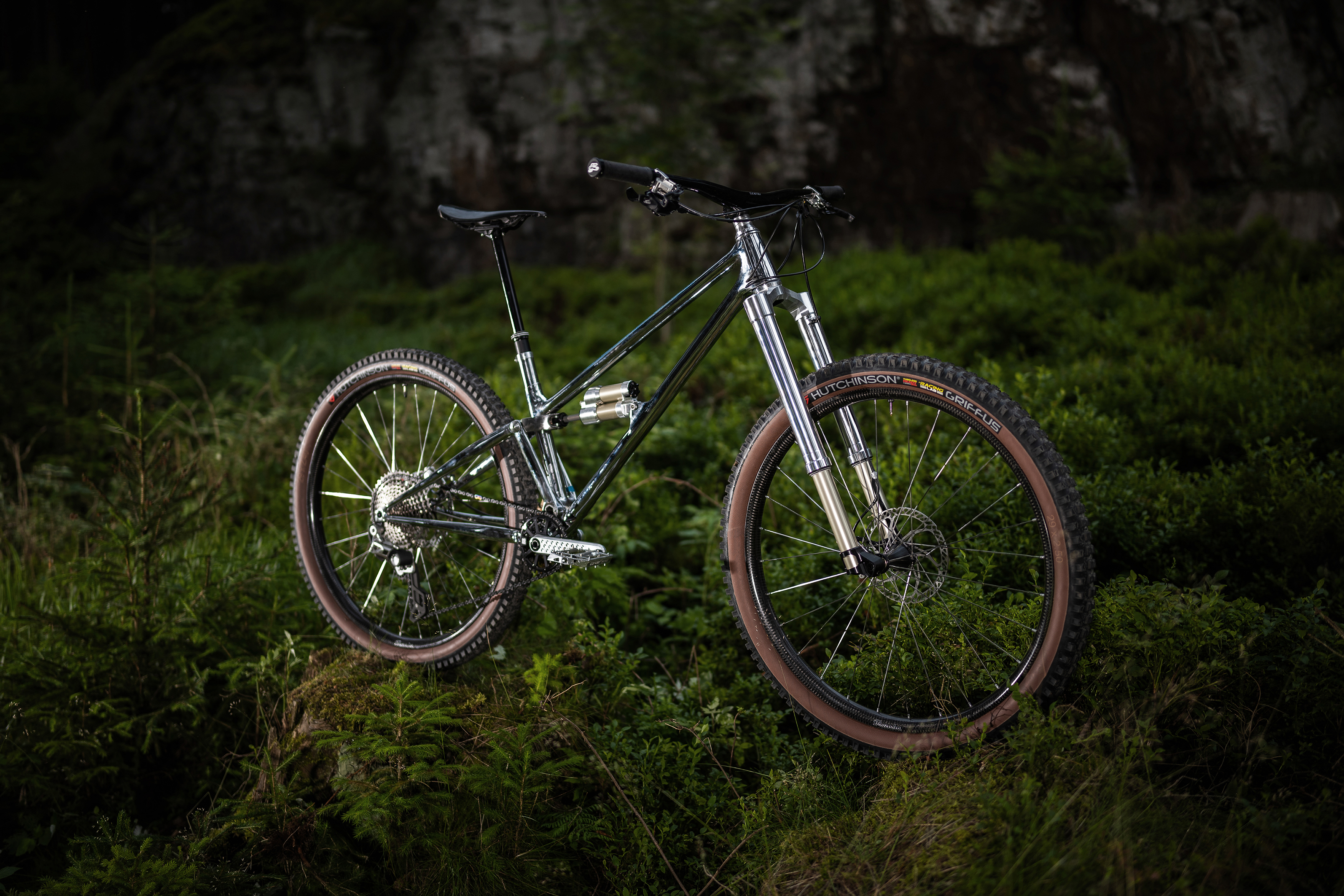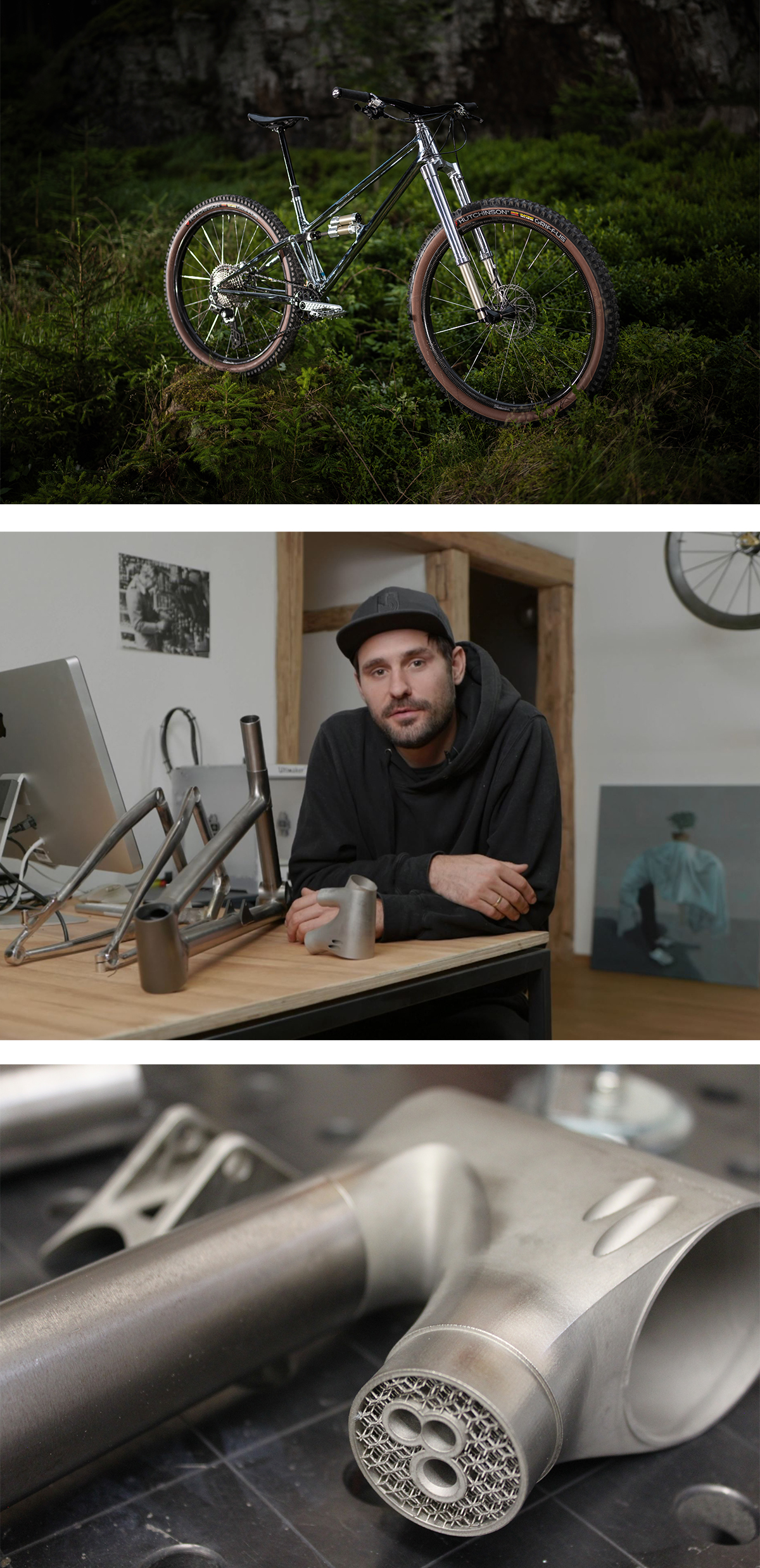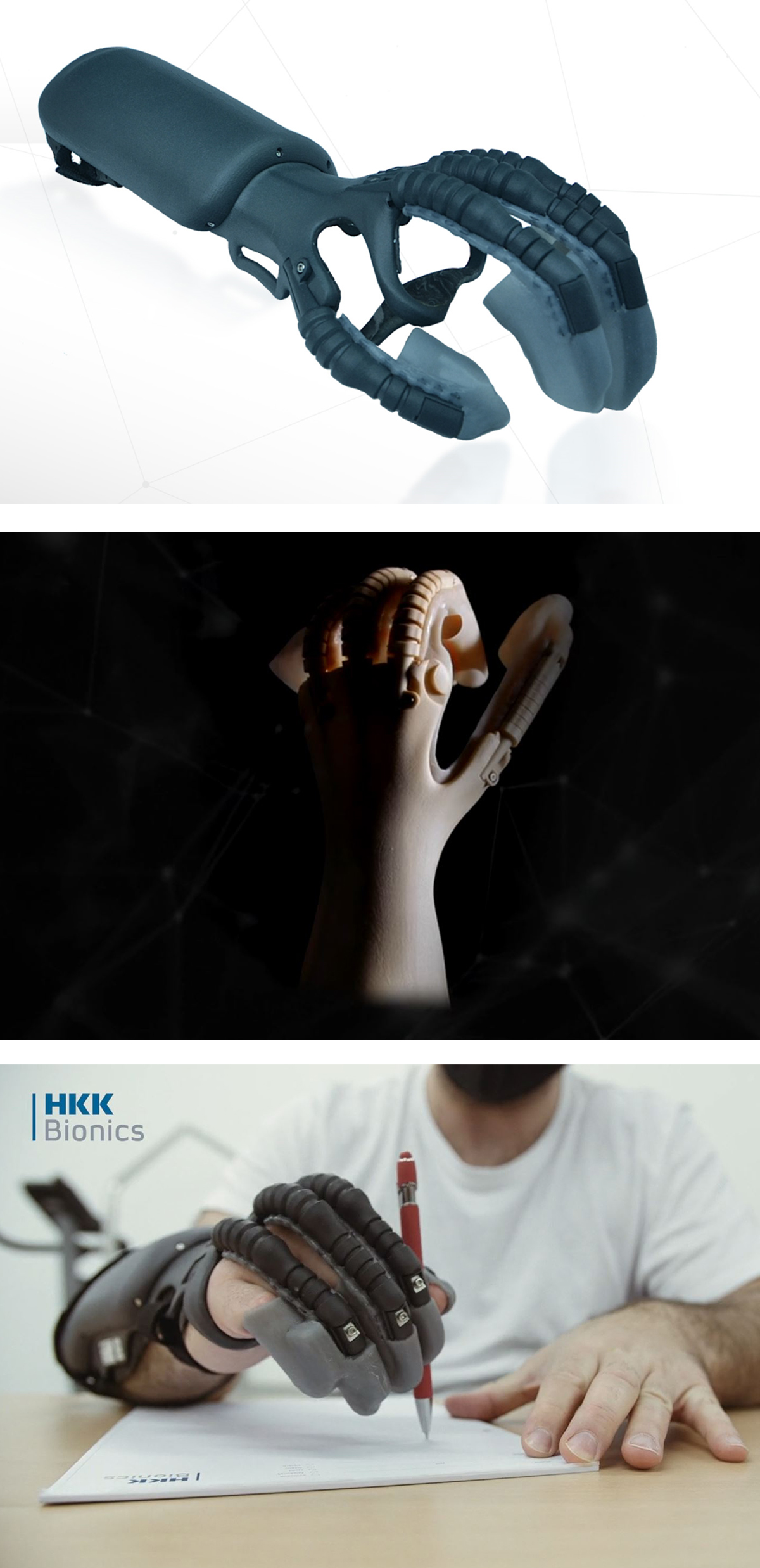Huhn Cycles, a manufacturer of additive manufactured mountain bikes, has been awarded first place in the purmundus challenge for its 3D printed Moorhun Bike, announced at Formnext Connect 2020.
The purmundus challenge is an annual competition inviting designers and engineers from around the world to participate in a theme-based 3D printing design contest. This year, the theme of the competition is “Geometry and Material in Harmony”, with the event held in a purely digital format along with the rest of this year’s Formnext.
Claiming second place in the competition was HKK Bionics with its bionic hand orthotic, the Exomotion Hand One, and announced in third place was a recyclable 3D printed sneaker from 3D printed footwear designer Svet Abjo.
According to Corinna Ray, head of the purmundus challenge, despite its digital format the competition, “received more entries than ever before, and the quality has never been higher.”

The Moorhuhn Bike
Announced as the overall winner of the competition, the Moorhuhn Bike was designed to offer a modern titanium mountain bike with the same lightness and stiffness of those manufactured from carbon, but with the added benefits of being locally produced and custom-fitted to its rider.
Within the cycling industry, carbon fiber has been hailed by many as the ‘holy grail’ of lightweight, performance bicycle frame design. However, carbon products have a very short lifecycle and there are very few ways in which the material can be recycled, leading to carbon frames often ending up in landfills when their use expires. Titanium is a material that could offer many of the advantages of carbon and is able to be recycled over and over again. Titanium frames feel a little softer than carbon frames, though, which is where 3D printing had a significant impact within Huhn Bikes founder Ralf Holleis’ project.
The Moorhuhn bike features an optimized bicycle frame geometry achieved through additive manufacturing techniques. The bike frame is constructed from ultra-lightweight titanium tubes which are connected through 3D printed lugs. These lugs help to evenly distribute forces applied through the frame joints, increasing the rigidity of the connection points and overall strength of the frame. 3D printing also enables each frame to be produced according to the needs of each individual, and functions such as cable guiding, seat clamps, and bearing housings can be integrated into the design in order to aid the work of framebuilders.
Speaking of their decision to award the Moorhuhn Bike first prize, the jury said: “We are the jury were very impressed by this project. We thought it was a great example of an innovative use of additive manufacturing for the right reasons, and an also interesting example of who AM can be combined with more traditional methods to create a product that is both high performance and ultimately very desirable.”

Second and third prize
A total of 35 finalists from 13 countries and 5 continents were announced for this year’s purmundus challenge, which as always is trademarked under rapid prototyping company Cirp GmbH.
Taking second place is HKK Bionics’ Exomotion Hand One bionic hand orthosis, which can be best described as a “motorized glove”. The orthosis has been designed as a functional assistive device for everyday tasks to restore the gripping function of paralyzed hands. 3D printing was used to create a biocompatible PA12 splint integrated with a sensor, to which intelligent software is connected. Through this technology, the user’s intentions can be recognized from muscle movements further up the arm, which then instigates and controls microdrives in the fingers.
Meanwhile, third place was awarded to the Sneaker Zero, designed by Abjo of the Zellerfeld Shoe Company, a fully functional, recyclable sneaker which can be personally customized using foot scans. The whole shoe, including the sole, midsole, and upper, is 3D printed in one go and in one material, in order to eliminate stitching and gluing processes.

Further purmundus challenge award winners
Receiving a special mention from the jury was the Tactile Color Compass created by 3D printing software provider Taktilesdesign. Involving the expertise of Stratasys and Roland UV Printing in its creation, the compass uses haptic experience to guide visually-impaired users through landscapes, pictures, and everyday objects by relating tactile surfaces to colors.
“The way of working impressed us as the jury. Sylvia Goldbach and Eric Bahr let the feedback of visually impaired children flow directly into the development of the Tactile Compass through cooperative and iterative work,” the jury commented.
“This creates an inclusion between sad and blanked people on many levels.”
Elsewhere, 3D printed anatomical model provider, ANAMOS, along with several other partners, was awarded the purmundus challenge Innovation Prize for its 3D printed human heart model designed for surgical simulation. Exhibiting a realistic function and feel, the heart model creates new opportunities for medical training and evaluation and can be adapted to recreate different conditions.
The purmundus challenge Simulation Driven Design award recognized an R&D collaboration between Inspire AG, ETH Zurich, and Gressel for their BOLT-IT project. BOLT-IT are universal interfaces produced within the 3D printing process to enable the automated gripping handling of parts. Developed over two years, this concept facilitates an automated physical and digital post-process production chain.
Last but not least, the purmundus challenge announced a new award for this year, called the Newcomer Award. Receiving the inaugural award was Yejun Fu, from the School of Design Innovation at the Victoria University of Wellington, for her project investigating bio-based responsive materials as a means of initiative change and transforming 3D printing to 4D printing.

Subscribe to the 3D Printing Industry newsletter for the latest news in additive manufacturing. You can also stay connected by following us on Twitter and liking us on Facebook.
Be sure to subscribe to the Another Dimension podcast on your chosen podcast player to make sure you never miss an episode.
Looking for a career in additive manufacturing? Visit 3D Printing Jobs for a selection of roles in the industry.
Featured image shows purmundus challenge 2020: Moorehuhn Bike wins first prize at Formnext Connect. Image via Huhn Cycles.



